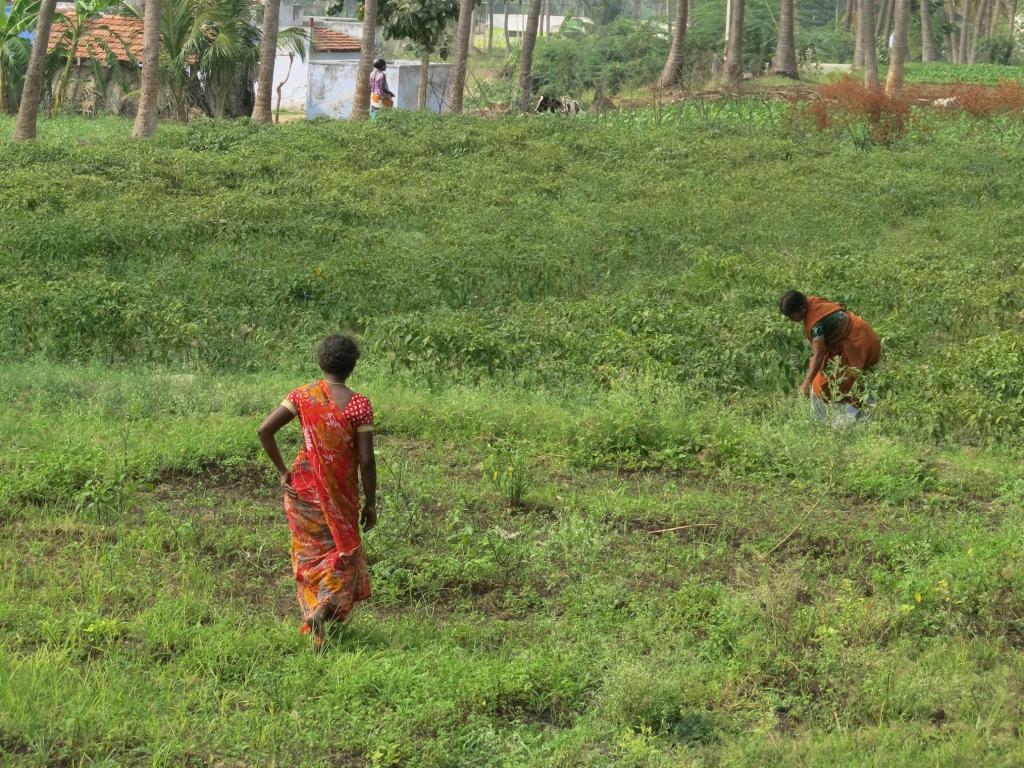Household-level research paints fuller picture of food security in rural India

ASSAR's household-level research uncovers how men and women in rural India experience risk and paints a fuller picture of food security. Words by Lucia Scodanibbio and Divya Solomon.
In July 2018, ATREE colleagues Shrini Badiger and Divya Solomon were invited to speak about the energy-water-nutrition nexus at a National Workshop on the Economic Costs of Climate Change in Rural India, organised by the Madras School of Economics and GIZ.
Most of the attendants were economists, who presented large-scale data sets where gender was brought in through counts of female-headed households and correlated to monetary losses. The rich narratives emerging from ASSAR’s work at household and intra-household level, presented by Badiger and Solomon, complemented the economists' high level work on monetary evaluations and resulted in a positive response.

“Large-scale data sets seem to imply there are no food security issues. But if you look at our data a completely different picture emerges on how households experience food security, says Badiger. "It’s the difference between looking at food sufficiency, and the quality of nutrition.”
ATREE’s micro-level work documents how men and women in rural India experience risk. An example of this is the case study Solomon and Nitya Rao authored on the gendered dimensions of groundwater dependence conducted in Northern Tamil Nadu. Using evidence gathered from quantitative and qualitative research, Solomon and Rao unpacked the impacts of electricity subsidies for agriculture at the household level. The research shows how these subsidies have impacted household nutrition in Tamil Nadu. It highlights how families have shifted cropping patterns from micronutrient-rich dryland suitable grains to water intensive cash crops for sale, and moved from consuming dairy products to now selling milk due to having spent money on fodder they no longer grow. In addition, shifts in the type of food distributed by the Public Distribution System, which mainly consists of white refined rice, have resulted in increased rates of obesity and diabetes.
The nexus between electricity subsidies and groundwater depletion has been widely studied in India. However, few studies delve into the implications of these policies for households. Without the perspective of families and the different members that compose a household a skewed picture can emerge.

Figure from Shrinivas Badiger's presentation on the drivers of the expansion of groundwater irrigation and implications at a National Workshop on the Economic Costs of Climate Change in Rural India, organised by the Madras School of Economics and GIZ.
The implications of policy interventions, particularly in the agricultural sector, often overlook the unintended consequences that may arise, particularly within households. There is a need to focus on the gendered impacts of these policies to prevent negative impacts on the most vulnerable and to manage risks that may emerge.
Watch this space! Another paper focusing specifically on nutrition issues is in preparation.
Lucia Scodanibbio is the Adaptation at Scale in Semi-Arid Regions (ASSAR) project manager
Divya Solomon is a Senior Research Associate working in the water and society program within the Center for Environment and Development at the Ashoka Trust for Research on Ecology and Environment (ATREE) in Bangalore India. Her research focuses on the intersections of gender, vulnerability and adaptation in the semi-arid regions of India. She is especially interested in understanding the risk management strategies within rural India and implications on intra-household well-being.
Main photo credit: Lucia Scodanibbi